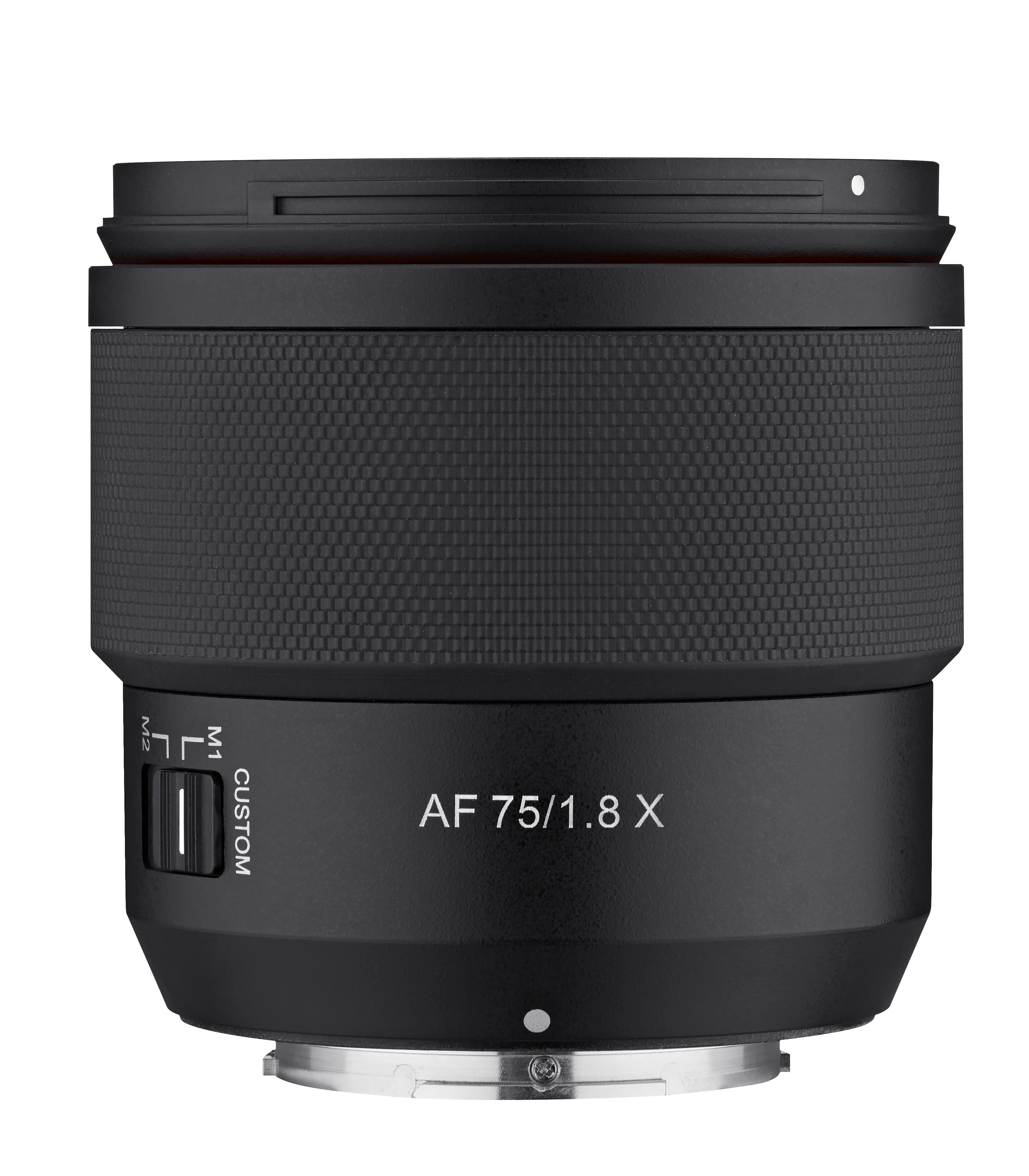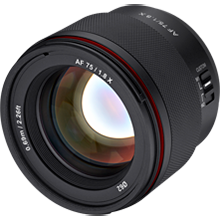Product Description
Samyang AF 75mm F1.8 lens for Fuji X
- Smallest and lightest X mount telephoto lens
- 112mm equivalent full-frame focal width
- Wide maximum aperture for shallow depth of field
- Excellent resolution across the whole frame
- New preset Aperture Control feature
- Excellent choice for both stills and video
- Second generation lens design with rubberised focus ring and weather sealing
- 62mm filter thread

This 257g (9.0oz) superlight lens incorporates Samyang's optical technology accumulated more than 50 years. It provides excellent resolving power that covers the high-resolution sensors of the latest cameras with an incredibly compact medium-telephoto lens. Along with the outstanding optical performance that can clearly capture 4K as well as 6K, Samyang's unique new feature 'Preset Aperture Control' function allows you the smooth depth of field expression when shooting videos.

Overwhelming Lightweight, Overwhelming Performance
The AF 75mm F1.8 X is the new superlight telephoto autofocus lens that will perfectly match the small and light Fujifilm X Series cameras. It's compact and light but offers outstanding performance with its advanced optical technology of over 50 years. With lightweight, excellent resolution, fast and accurate autofocus performance, and convenient features, take it lightly to cherish every one of your every moment!
A Perfect Match to Compact Fujifilm X Cameras
The AF 75mm F1.8 X is overwhelmingly lightweight and compact. Solely 257g (9.0oz) in weight and 69.3mm (2.7in) in length, this is the lightest and smallest autofocus telephoto lens designed for Fuji X-mount users. Maximizing its portability, it's a great match to compact Fujifilm mirrorless cameras and is part of everyone's precious moments.

Excellent Resolution in All Areas of the Image
The AF 75mm F1.8 X is engineered to deliver overwhelming image quality. The optical design, incorporating 2 HR(High-Refractive) 3 ED(Extra-Low Dispersion) glasses, provides stunning contrast and resolution from the centre to the corner of the image. Samyang's advanced coating technology is applied to achieve excellent sharpness and a clear image even in poor lighting conditions.

Impressive Background with Refined and Wonderful Bokeh
The subject can be highlighted utilizing the shallow depth of field with the AF 75mm F1.8 X. When it is used wide open, busy backgrounds melt away from the subjects, and the subject such as a person, animal, or food, stands out even if the background is busy. Smooth bokeh created by a 9-blade circular aperture design makes the shallow depth of field expression more dreamy.
Preset Aperture Control Function Specialized for Video Shooting
With Samyang's own feature "Preset Aperture Control" function on the "Custom Swith", you can create a video maximizing Fujifilm's own unique look and feel. You can control the depth of field more smoothly without noise and vibration when you record videos in AF mode. Every movement will be expressed more naturally than controlling Fujifilm's camera body.

Modern Design with Weather Sealing
The AF 75mm F1.8 X has adopted the Samyang AF 2nd generation design such as a rubberized micro-patterned focus ring, hidden red ring, and matte finish, also weather sealing applied to 5 different spots.
Fast and Accurate Auto Focus
The AF 75mm F1.8 X tracks the subject accurately and quickly, whilst the AF operates quietly and smoothly in video recording mode. In particular, it is advantageous for video shooting as this compact and lightweight lens is suitable for use on a gimbal, in



















